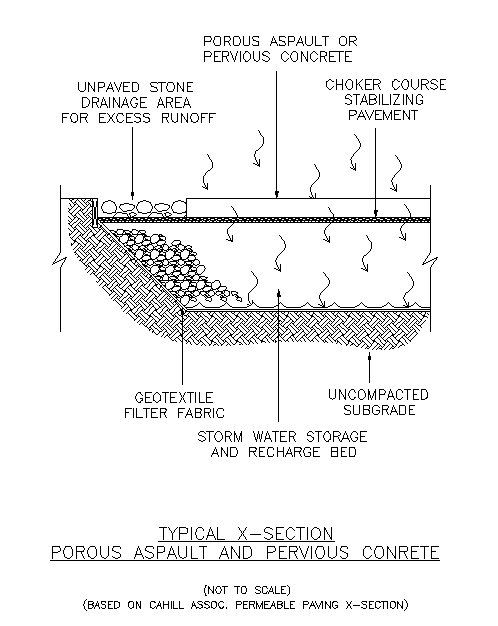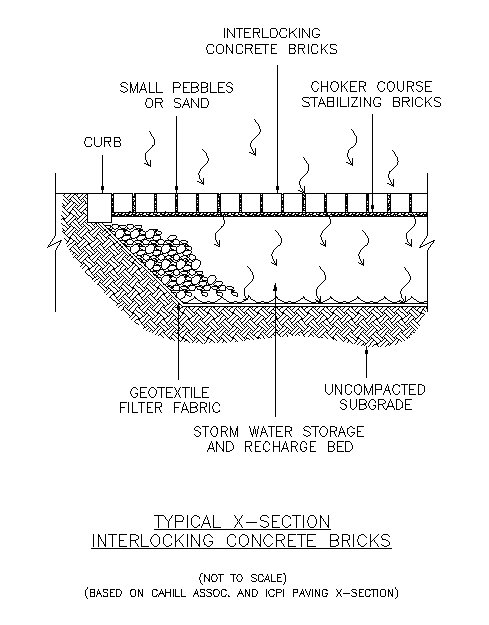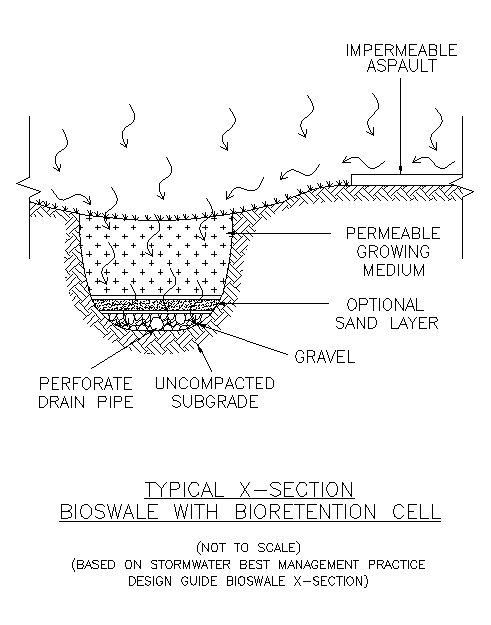This analytical report will look at the dirt parking lot on campus, located at the corner of Summit and McGill. The purpose is to compare and contrast the costs and benefits of using bioswales vs. lattice paving as a way to prevent contaminated surface water run off from the lot (if it were to be paved) from entering into the Thompson River.
METHOD
Research Strategy
Interviews Engineering Firms
- Derek Kronebusch (Dayton & Knight Ltd.) – interested
- Scott Bilbrough (Dayton & Knight Ltd.) – possibly interested
- Ashley (Urban Systems) – no reply
- Library books – TRU, Kamloops Library, Vancouver Library
- Library magazines – TRU, Kamloops Library, Vancouver Library
- Engineering journals- resources received from Derek Kronebusch
- Internet – last resort
- Possibly visit sites where bioswales are located
A More In Depth Research Approach
1) Understand how bioswales work and what they do.
2) Research the different types of bioswales and choose the best one for my chosen site and pollutant removal.
3) Read engineer’s journals for design components and ideas.
4) Look at various cities design manuals to learn the best way to design a bioswale for my site.
5) Find articles describing the types and amount of pollutants entering the runoff from parking lots.
6) Determine if a bioswale is better than using permeable paving. Cost comparison, efficiency comparison, maintenance, life expectancy, impact on the environment.
7) Is the cost, and maintenance of a bioswale in comparison to permeable paving worth the payoff off? How much/type contaminants are removed from entering into our river by using a bioswale vs permeable paving?
SPECIAL PROLEMS
1) What types of plants will be able to survive in Kamloops?
2) How effective are bioswales at removing pollutants vs permeable paving?
3) Is a bioswale more cost effective than a permeable system?
4) How long will a bioswale/permeable paving last for? What type of maintenance is needed?
5) Which type of bioswale will be needed in Kamloops, dry, grass, or wet?
6) Will a bioswale create a place for mosquito to reproduce?
7) How can we prevent a place for mosquitoes to flourish?
8) Will the bioswale/permeable paving freeze in Kamloops?






Hey Jill,
ReplyDeleteI found a book that I hope can be helpful to you. It is called Design for water: rainwater harvesting, stormwater catchment and alternate water reuse. It's by Heather Kinkade-Levario. It deals with alternate water collection in the urban environment and has some case studies you could look at. Check it out and let me know if it's helpful.
Awesome, that could be really helpful. As of right now I am working on my abstract which won't be including retention of water, but that's only because I don't have the data for it... yet. I will definitely take a look though, thanks.
ReplyDeleteLet me know if you can't find this book. I have been thinking about buying it.
ReplyDeleteAlso, your sumo image is great!